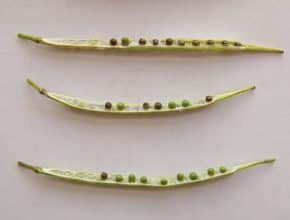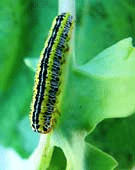In a situation where a field has matured more rapidly than expected and the majority of plants are beyond 80% seed color change, growers may be better off leaving the crop for straight combining. Swathing may result in costly losses…
Canola Watch Posts
-
-
Bertha armyworm is at threshold levels in a few late fields in central Peace and western Saskatchewan regions. Lygus bug feeding continues in parts of Saskatchewan and around Dauphin, Manitoba…
-
After a light frost of 0 to -2 C, damage is likely to be minor meaning swathing prematurely may do more harm than good. However, it is important to get out there and check crops to ensure damage is not greater than expected…
-
Some canola growers are swathing canola at 10-15% seed color change because they’re worried about getting all their canola swathed before a heavy frost. If no serious frost in the……
-
Peace (Alberta and B.C.): Growers in the north are swathing, but for the rest of the region, widespread swathing will not start until the coming weekend. Alberta: Southern Alberta is……
-
Some growers anxious about the calendar and the typical date of first killing frost are swathing canola early, at around 10-15% seed color change. At this stage, many seeds on the side branches may be watery and translucent. If this represents 30% of seeds, for example, growers must recognize that early swathing could mean sacrificing a large proportion of that…
-
Just because pods look dry and mature does not mean the seeds are ready for swathing. Sunscald and diseases such as blackleg, sclerotinia and clubroot can make plants look mature but the seeds may still be green. The opposite can also happen where pods look green but the seeds inside are ready. When assessing a canola crop to see if…
-
Cutting canola in hot conditions will lead to rapid dry down and desiccation. Chlorophyll may not have time to clear from immature seed, which locks in high green counts. If growers feel they must swath, wait until temperatures cool down in the evening and then swath at night to take advantage of those cooler temperatures and any moisture from dew…
-


